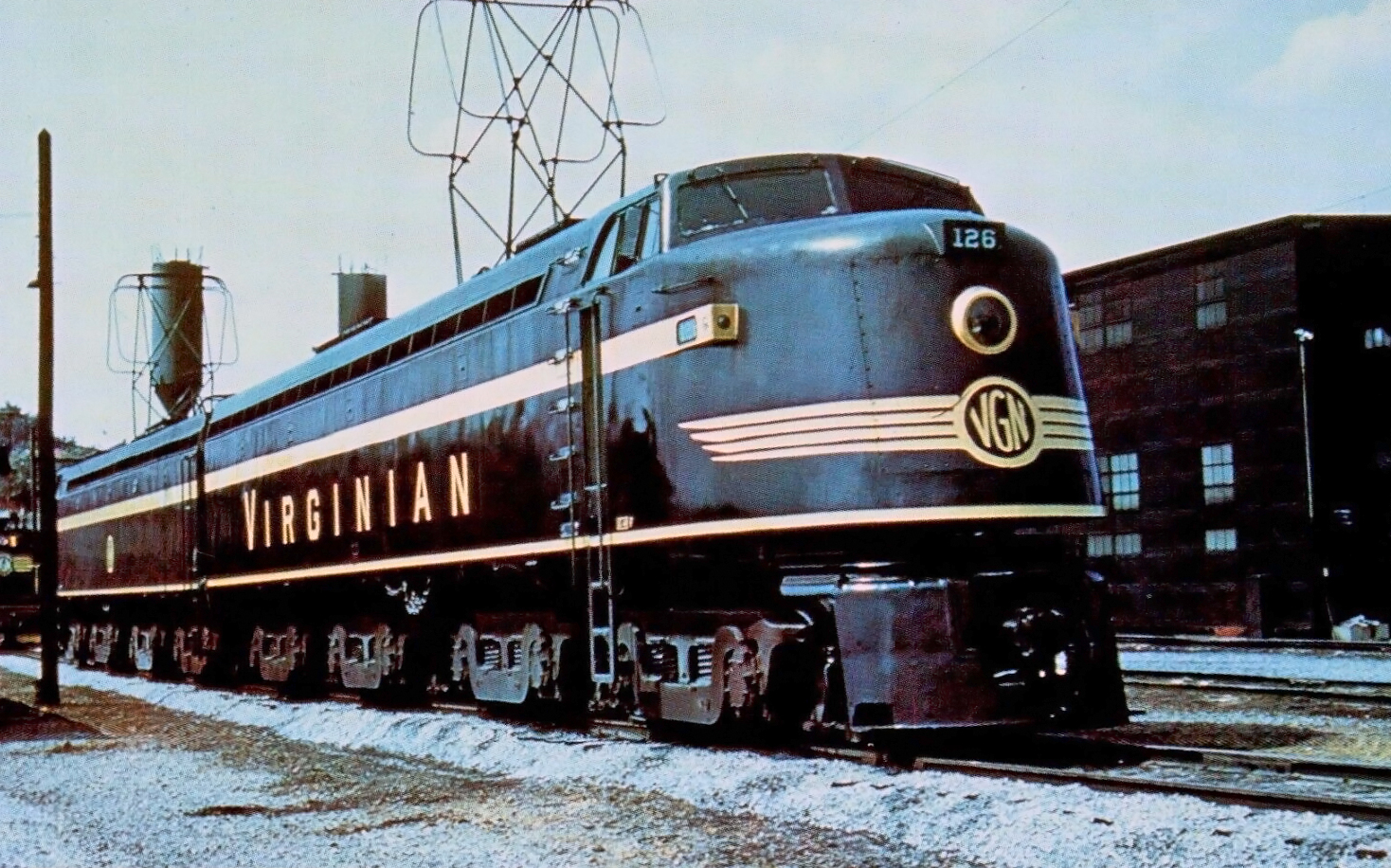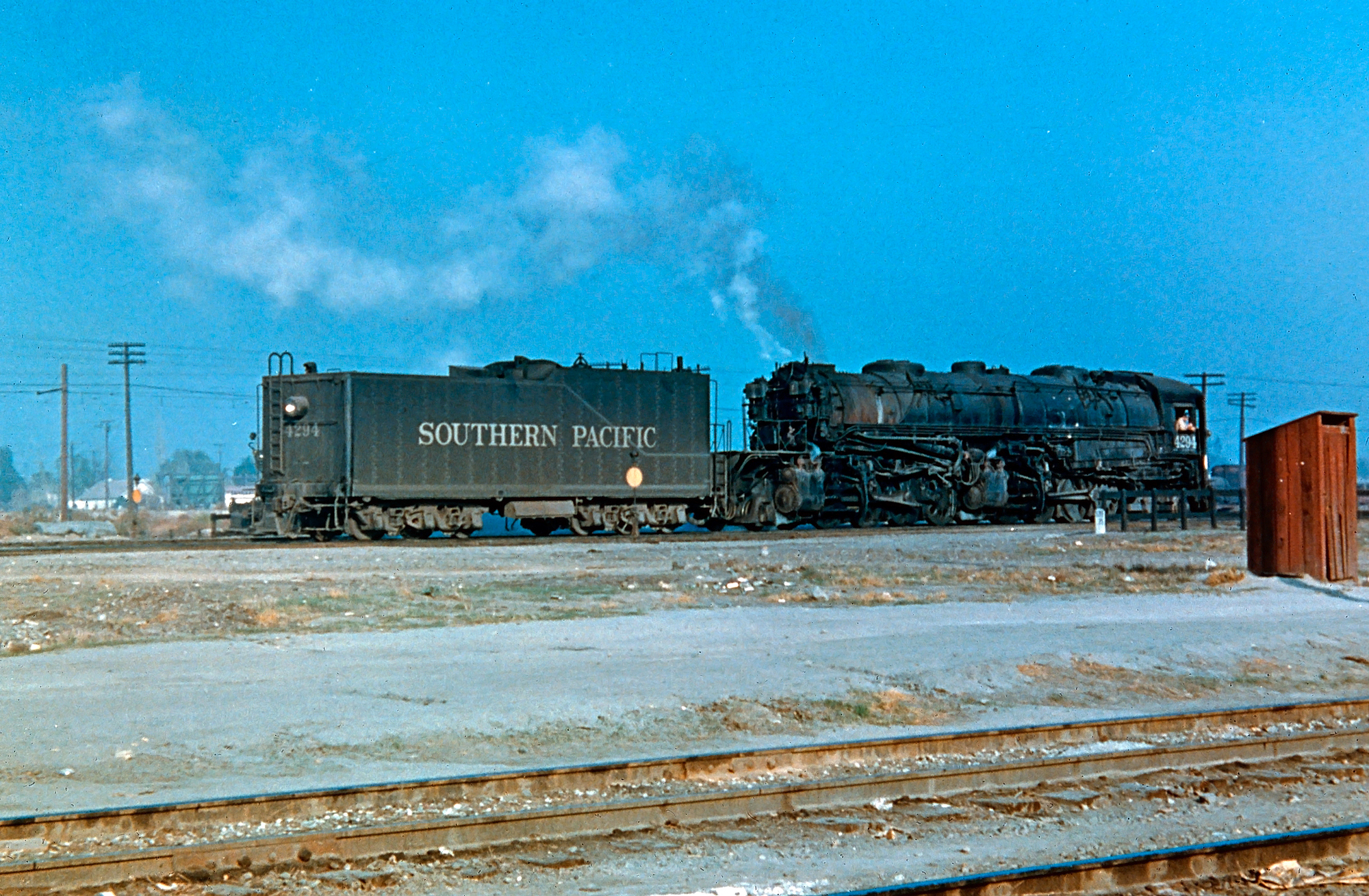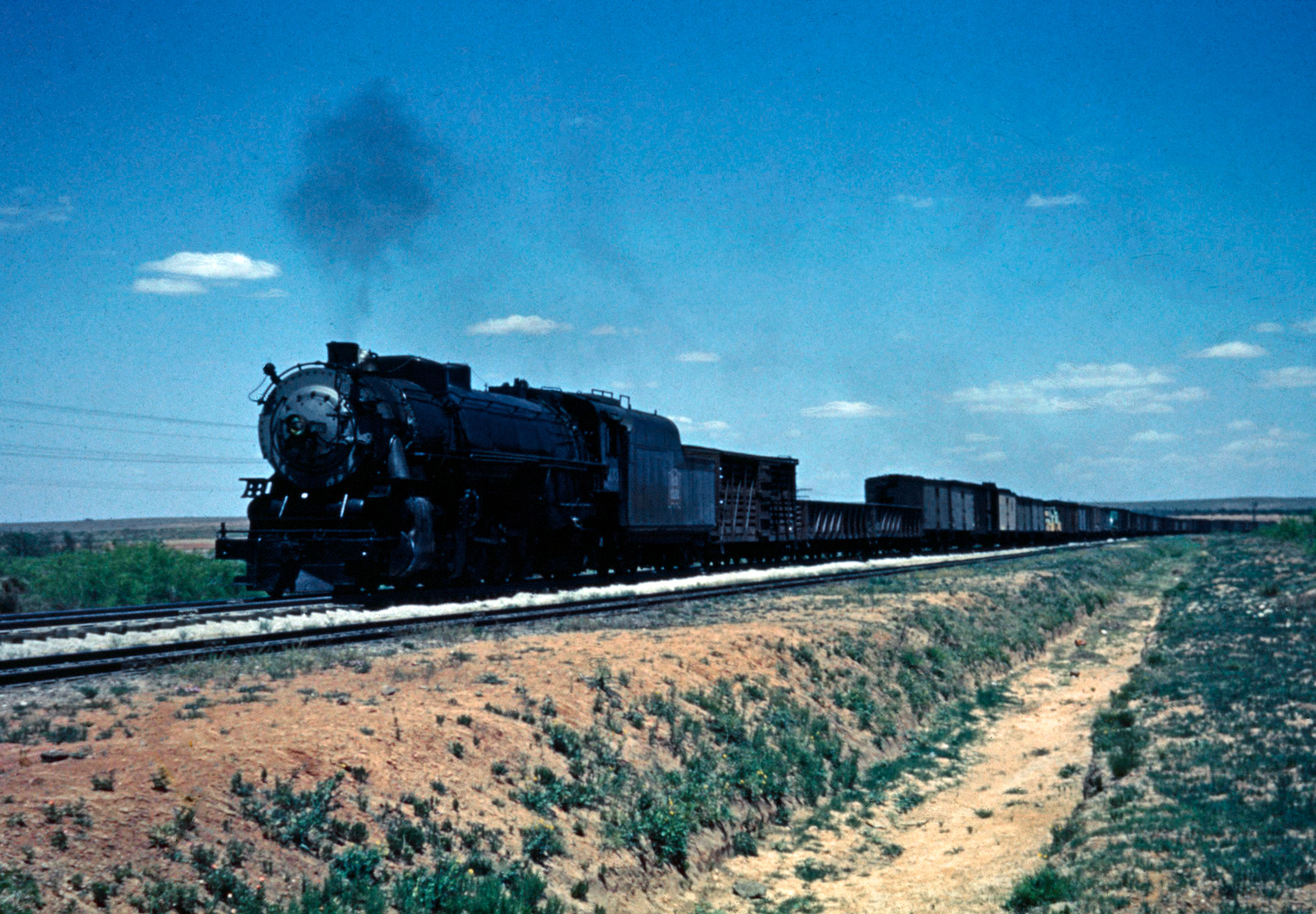The "EL-2B" Motors: VGN's Rugged Electrics
Last revised: November 6, 2024
By: Adam Burns
The Virginian Railway's EL-2B electrics, the so-called "Streamliners", are hailed as torchbearers of electric railway innovation, which continued in the U.S. through the mid-20th century.
They were the embodiment of the cutting-edge technology that was emerging in the realm of electric locomotion, and they signaled a pivotal moment in the advancement of rail transportation in the United States.
The Virginian, the brainchild of financier Henry Huttleston Rogers, was known for efficient, modern transportation in the movement of coal from the mines of southern West Virginia to the Virginia tidewater at Norfolk/Sewall's Point.
After 15 years of service the Virginian decided to adopt the more modern, and efficient, electrification for the western end of its system. In 1923 it contracted with Westinghouse to electrify 134 miles between Roanoke and Mullens utilizing 11,000-volt, AC electrification. It required three years to complete at a cost of $15 million.
The EL-2Bs were introduced in 1948, a replacement for the aging siderod boxcabs. These big brutes included a set of four, semi-perminently pairs produced and assembled by GE (General Electric) - an enterprise that had started off as a light bulb company and had gone on to become a vital player in America's railway industry.
Photos
 Virginian EL-2B set #126 was photographed here at the NRHS convention in Roanoke, Virginia in the summer of 1957. John Stith photo.
Virginian EL-2B set #126 was photographed here at the NRHS convention in Roanoke, Virginia in the summer of 1957. John Stith photo.Development
The Virginian was the last place one might expect to find streamlined locomotives. The railroad was almost solely focused on the movement of black diamonds and provided only the bare minimum in passenger service.
Nevertheless, during an era when such cab designs were commonplace - even in electrics - the Virginian wound up with a small fleet of such motors from General Electric.
In his book, "Electric Locomotives," author Brian Solomon notes the railroad needed larger and more powerful locomotives to handle increasingly heavier coal movements while also supplementing its fleet of siderod boxcabs.
What GE ultimately came up with was a design based from a group of Great Northern 5,000 horsepower motors completed in 1946 for the railroad's Cascade Tunnel electrification. The massive double-ended B-D+D-B locomotives, which utilized AC rectifier technology, measured 101 feet in length.
Rectifiers were truly exceptional for ther time, enabling the inherent advantages of alternating current (AC), which was then converted to high-adhesion DC.
As Michael Duffy notes in his book, "Electric Railways: 1880-1990":
"The single-phase AC/DC type of locomotive was simple in construction. The rectifier was fed by the transformer and the motors were in series with a smoothing choke and received DC voltage varying between zero and the maximum. Reduction in motor weight was an advantage."
The GN units, listed as Class W-1, utilized transformers which converted the railroad 11,000-volt, AC electrification down to 1,350 volts, AC. This lower voltage was then used to drive DC generators that fed power to twelve GE model 746 nose-suspended traction motors.
Specifications
The Virginian's Class EL-2Bs were a hefty, semi-permanently coupled pair of streamlined locomotives (given a single road number) carrying a B+B+B+B wheel arrangement. Weighing in at 1,033,832 pounds they could produce an impressive 260,000 pounds of starting tractive effort and 6,800 horsepower.
A set's continous rating was 162,000 pounds, the result of its 16 axles, all of which were powered. The top speed was only 50 mph, although speed was not of paramount concern in the service these locomotives operated.
Overall, the EL-2Bs were extremely impressive machines and performed admirably throughout the Virginian's electrified territory, handling heavy coal drags and other freight movements.
EL-2Bs predominantly operated on the steep grades between Roanoke, Virginia, and Elmore, West Virginia, servicing coal operations where their power was unmatched.
They were later augmented by Class EL-Cs in the mid-1950s. These motors were also products of GE although were rated only at 3,300 horsepower and carried a more traditional, and boxy, road-switcher appearance with an offset cab at the head end.
Retirement
After the Virginian Railway merged with Norfolk and Western in 1959 the new owner had little interest in the electrified operations. Just three years later, the N&W shudown the operation on June 30, 1962. After ceasing operations, all of the EL-2Bs were sadly scrapped.
Data Sheet
| Years Produced | 2/1948 |
| Wheel Arrangement | B+B+B+B |
| Total Weight | 1,033,832 Lbs |
| Driving Axles | 16 |
| Horsepower | 6,800 |
| Weight Per Axle | 62,500 Lbs |
| Tractive Effort (Starting) | 260,000 Lbs |
| Tractive Effort (Continuous) | 162,000 Lbs (At 15.75 mph) |
| Adhesion | 16.2% |
| Top Speed | 50 mph |
| Traction Motors | GE 746 (16) |
| Gear Ratio | 70:17 |
| Phase | Single |
| Air Brake | 8EL |
| Compressors | 4 |
| Compressor Air Capacity | 600 cfm |
| Control Type | PCL Electro-Pneumatic |
| Maximum Track Curvature | 19 Degrees |
| Total Length (Between Couplers) | 150' 8" |
| Total Wheel Base | 133' 8" |
| Rigid Wheel Base | 9' 0" |
| Width (Overall) | 11' 1" |
| Width (Over Cab) | 10' 4" |
| Height (Locked Pantograph) | 16' 3" |
| Height (Over Cab) | 15' 6" |
| Wheel Diameter | 42" |
| Track Gauge | 4' 8 ½" |
| Coupler Height | 2' 10 ½" |
| Clearance Over Rails, New Wheels | 4' 5/8" |
Production Roster
| Owner | Road Numbers | Serial Numbers | Order Number | Completion Date |
|---|---|---|---|---|
| Virginian | 125-128 | 28650-28653 | - | 2/1948 |
In conclusion the Virginian Railway's EL-2B electric locomotives were unique lessons in design, technology, and engineering.
They ruled the rails during their operational years, and even long after their retirement, they continue to be a topic of discussion and admiration among rail enthusiasts and historians, embodying the advancements of a transitioning era in the U.S. rail industry.
Sources
- Lewis, Lloyd D. West Virginia Railroads Volume 4: Virginian Railway. Forest: TLC Publishing, Inc., 2011.
- Rail Heritage Publications. Early Diesel-Electric and Electric Locomotives. Simmons-Boardman Publishing Corporation, 1983.
- Solomon, Brian. Electric Locomotives. St. Paul: MBI Publishing, 2003.
Recent Articles
-
Mother's Day Train Rides In Colorado (2025): A Complete Guide
Mar 19, 25 11:15 PM
Within Colorado there is one location hosting a train ride celebrating mom, the Georgetown Loop Railroad. -
Southern Pacific Steam Roster: Post 1900
Mar 19, 25 10:45 PM
The Southern Pacific operated a large and electic collection of steam locomotives, from handed-down narrow-gauge 2-8-0s to powerful 2-8-8-4s and the unique Cab Forwards. -
Rock Island Steam Roster: Post 1900
Mar 19, 25 09:59 PM
The Rock Island generally operated only mid-powered steam locomotives for most assignments due to its Midwestern profile and light bridges. This roster highlights its fleet post-1903.


